Effect of Lateral Airflow on Initial HSI and Flame Behavior of Marine Fuel in a Ship Engine Room: Experiment and Analysis
Abstract
:1. Introduction
2. Materials and Methods
2.1. Experimental Apparatus
2.2. Experimental Materials
2.3. Experimental Procedure
2.4. Current Limitations and Assumptions of Experiment
- Some experiment equipment is arranged in the ship engine room laboratory in a manner that is more consistent with a real ship engine room. The aim is to restore, as much as possible, the operation and accident scene of a ship engine room in which leaked marine fuel is ignited due to contact with a high-temperature source on the equipment surface. However, other equipment set in the experiment does not directly start running. This may have an influence on the HSI temperature and delay time in terms of the thermal feedback in the ship engine room. This is where the prediction model should be further modified after data collection from thermal feedback in future research.
- According to the accident scenarios of different marine fuels and airflow velocities in a ship engine room, the interval temperature of the hot surface is selected to be 5 °C. This is mainly due to the limitations in adjusting the temperature range in the high-temperature hot-surface simulator developed in the current experiment. The next step should be to improve the hot-surface simulator so that the heating interval can reach 1 °C or even 0.5 °C, thus promoting the accuracy of prediction models involved in examining HSI-driven flame behavior.
- Finally, the influence of ship sloshing is not taken into account in the HSI process of the leaked marine fuel in the ship engine room. It is one of the key problems that deserve more attention in future research. Since ships are affected by wind and waves under different conditions when docking or sailing, the ship sloshing period and amplitude are inconsistent. Future research requires more experimental tests to combine sloshing factors with the HSI process and flame behavior. Making the dimensions covered by prediction models more comprehensive and applicable to a wider range of ship fire scenarios is yet to be achieved.
3. Results and Discussion
3.1. HSI Characteristics of Marine Fuel under Lateral Airflow in Ship Engine Room
3.2. Flame Behaviors of Marine Fuel HSI under Different Airflows in Ship Engine Room
3.3. Temperature Field of Marine Fuel HSI with Different Hot-Surface Temperature
4. Conclusions
- The distance between the ignition height and leaked marine fuel is closely related to the hot-surface temperature and environmental factors. As lateral airflow increases to a critical velocity, the HSI height of marine fuel will no longer reduce but instead tends to ignite in a more stable area. HSI positions can be determined using prediction models, which are developed as Equations (8) and (9) in the current work.
- With a constant change in the hot-surface temperature, the deviation of the HSI-driven flame of the marine diesel fluctuates between 0.005 and 0.10 m. As the hot-surface temperature increases from 485 to 510 °C, the average flame deviation of the hydraulic oil is 0.147 m. The flame deviation degree of the hydraulic oil HSI always changes smoothly under enhanced lateral airflow velocity.
- The flame plumes of the hydraulic oil and oil surface area are higher at the same hot-surface temperature. An uneven temperature field distribution in the vertical space of the diesel produces a local temperature jump; meanwhile, the fluctuation of the hydraulic oil through the temperature field is significant and lasts for a long time with a low hot-surface temperature in a ship engine room.
Author Contributions
Funding
Institutional Review Board Statement
Informed Consent Statement
Data Availability Statement
Acknowledgments
Conflicts of Interest
Nomenclature
| A | Surface cross-sectional area, m |
| g | Acceleration of gravity, m/s2 |
| Hmax | Height during initial ignition, m |
| hF | Heat transfer coefficient of transition boiling, W/m2∙K |
| kvf | Heat conductivity of vapor in the film, W/(m·K) |
| q | Heat flux, w/m2 |
| Tmin | Initial hot-surface temperature, °C |
| Tsat | Fuel saturation temperature, L |
| ρL | Liquid fuel density, kg/m3 |
| σ | Surface tension of liquid, mN/m |
| ASET | Available safe egress time |
| FDS | Fire dynamics simulator |
| MIT | Minimum ignition temperature |
| B | Mass transfer number, dimensionless |
| Hfg | Latent heat of vaporization, J/(kg °C) |
| Hmin | HSI height of marine diesel during the stationary period, m |
| hn | Nuclear boiling heat transfer coefficient, W/m2∙K |
| mF | Fuel evaporation rate, gm/s |
| Tm | Average change in temperature of hot surface, °C |
| Ts | Hot-surface temperature, °C |
| Tw | Heated source temperature, K |
| ρv | Fuel vapor density, kg/m3 |
| μvf | Viscosity of vapor in the film between wall and liquid, Pa∙s |
| AIT | Auto-ignition temperature |
| HSI | Hot-surface ignition |
References
- Vukelic, G.; Ogrizovic, D.; Bernecic, D.; Glujic, D.; Vizentin, G. Application of VR technology for maritime firefighting and evacuation training—A review. J. Mar. Sci. Eng. 2023, 11, 1732. [Google Scholar] [CrossRef]
- Zhang, H.; Li, C.; Zhao, N.; Chen, B.-Q.; Ren, H.; Kang, J. Fire risk assessment in engine rooms considering the fire-induced domino effects. J. Mar. Sci. Eng. 2022, 10, 1685. [Google Scholar] [CrossRef]
- Wang, K.; Ming, Y.; Wang, H.; Liu, X.; Qian, X.; Shi, T. Failure analysis and correction models for upward flame characteristics subjected to shipping container fire. Eng. Fail. Anal. 2023, 152, 107519. [Google Scholar] [CrossRef]
- Allison, D.; Marchand, A.; Morchat, R. Fire performance of composite materials in ships and offshore structures. Mar. Struct. 1991, 4, 129–140. [Google Scholar] [CrossRef]
- Wang, K.; Wang, J.; Shi, T.; Qian, X.; He, Y. Effects of adjacent space on spill flame of chemical hazardous materials container fire. Int. J. Therm. Sci. 2020, 156, 106457. [Google Scholar] [CrossRef]
- Li, C.; Zhang, H.; Zhang, Y.; Kang, J. Fire risk assessment of a ship’s power system under the conditions of an engine room fire. J. Mar. Sci. Eng. 2022, 10, 1658. [Google Scholar] [CrossRef]
- Li, C.; Mao, J.; Kang, Z.; Zhao, S.; Ren, H. Influence of firefighting intervention on fire spread characteristics in ship engine room. J. Mar. Sci. Eng. 2023, 11, 877. [Google Scholar] [CrossRef]
- Kang, H.; Choi, J.; Lee, D.; Park, B. A framework for using computational fire simulations in the early phases of ship design. Ocean. Eng. 2017, 129, 335–342. [Google Scholar] [CrossRef]
- Wu, B.; Zong, L.; Yip, T.; Wang, Y. A probabilistic model for fatality estimation of ship fire accidents. Ocean. Eng. 2018, 170, 266–275. [Google Scholar] [CrossRef]
- Wang, J.; Jiao, Y.; Shi, L.; Xie, Q.; Li, G.; Liu, J.; Chen, W.; Zhang, S. An experimental and non-dimensional study on the vertical temperature distribution of a sealed ship engine room fire. Ocean. Eng. 2018, 165, 22–33. [Google Scholar] [CrossRef]
- Puisa, R.; Williams, S.; Vassalos, D. Towards an explanation of why onboard fires happen: The case of an engine room fire on the cruise ship “Le Boreal”. Appl. Ocean Res. 2019, 88, 223–232. [Google Scholar] [CrossRef]
- Sarıalioğlu, S.; Uğurlu, Ö.; Aydın, M.; Vardar, B.; Wang, J. A hybrid model for human-factor analysis of engine-room fires on ships: HFACS-PV&FFTA. Ocean Eng. 2020, 217, 107992. [Google Scholar] [CrossRef]
- Wang, J.; Cui, X.; Zhang, R.; Xie, Q.; Zhang, S.; Shi, L. Study on the mass loss rate of liquid pool fire in a well-confined ship cabin. Int. J. Therm. Sci. 2021, 166, 106984. [Google Scholar] [CrossRef]
- Wang, J.; Zhang, R.; Wang, Y.; Shi, L.; Zhang, S.; Li, C.; Zhang, Y.; Zhang, Q. Smoke filling and entrainment behaviors of fire in a sealed ship engine room. Ocean Eng. 2022, 245, 110521. [Google Scholar] [CrossRef]
- Wu, X.; Zhang, Y.; Jia, J.; Chen, X.; Yao, W.; Lu, S. Experimental and theoretical analysis of the smoke layer height in the engine room under the forced air condition. Fire 2023, 6, 16. [Google Scholar] [CrossRef]
- Zhang, S.; Fang, W.; Shi, L.; Liu, J.; Liu, J.; Wang, J.; Cong, B. Fire plume characteristics of annular pool fire with different cylindrical obstacles in a ship engine room. Ocean Eng. 2023, 276, 114253. [Google Scholar] [CrossRef]
- Xie, C.; Huang, L.; Wang, R.; Deng, J.; Shu, Y. Ship fire modelling and evacuation simulation in navigation tunnel. Tunn. Undergr. Space Technol. 2022, 126, 104546. [Google Scholar] [CrossRef]
- Liu, J.; Wang, Z.; Lu, K.; Zhang, R.; Li, H.; Zhang, S.; Wang, J. Phenomenological characteristics and flame radiation of dynamically evolving oil spill fires in a sealed ship engine room. Ocean Eng. 2023, 267, 113298. [Google Scholar] [CrossRef]
- Zeinali, D.; Mehaddi, R.; Ingold, F.; Parent, G.; Acem, Z.; Collin, A.; Torero, J.; Boulet, P. Experimental study of fire containment using water mist curtains in a reduced-scale deck of a ro-ro ship. Fire Saf. J. 2023, 140, 103835. [Google Scholar] [CrossRef]
- Zhu, J.; Zhang, J.; Wang, Y.; Ge, Y.; Zhang, Z.; Zhang, S. Fire detection in ship engine rooms based on deep learning. Sensors 2023, 23, 6552. [Google Scholar] [CrossRef]
- Meyer, L.; Beyer, M.; Krause, U. Hot surfaces generated by sliding metal contacts and their effectiveness as an ignition source. J. Loss Prev. Process Ind. 2015, 36, 532–538. [Google Scholar] [CrossRef]
- Meier, T.; Stathopoulos, P.; Rohr, P. Hot surface ignition of oxygen–ethanol hydrothermal flames. J. Supercrit. Fluids 2016, 107, 462–468. [Google Scholar] [CrossRef]
- Menon, S.; Boettcher, P.; Ventura, B.; Blanquart, G. Hot surface ignition of n-hexane in air. Combust. Flame 2016, 163, 42–53. [Google Scholar] [CrossRef]
- Boeck, L.; Meijers, M.; Kink, A.; Mével, R.; Shepherd, J. Ignition of fuel–air mixtures from a hot circular cylinder. Combust. Flame 2017, 185, 265–277. [Google Scholar] [CrossRef]
- Melguizo-Gavilanes, J.; Boeck, L.; Mével, R.; Shepherd, J. Hot surface ignition of stoichiometric hydrogen-air mixtures. Int. J. Hydrog. Energy 2017, 42, 7393–7403. [Google Scholar] [CrossRef]
- Boeck, L.; Melguizo-Gavilanes, J.; Shepherd, J. Hot surface ignition dynamics in premixed hydrogen–air near the lean flammability limit. Combust. Flame 2019, 210, 467–478. [Google Scholar] [CrossRef]
- Mével, R.; Melguizo-Gavilanes, J.; Boeck, L.; Shepherd, J. Experimental and numerical study of the ignition of hydrogen-air mixtures by a localized stationary hot surface. Int. J. Heat Fluid Flow 2019, 76, 154–169. [Google Scholar] [CrossRef]
- Eckhoff, R. Measuring hot-surface minimum ignition temperatures of dust clouds—History, present, future. J. Loss Prev. Process Ind. 2019, 59, 63–76. [Google Scholar] [CrossRef]
- Li, B.; Li, M.; Gao, W.; Bi, M.; Ma, L.; Qin, Q.; Shu, C. Effects of particle size on the self-ignition behaviour of a coal dust layer on a hot plate. Fuel 2020, 260, 116269. [Google Scholar] [CrossRef]
- Mohaddes, D.; Boettcher, P.; Ihme, M. Hot surface ignition of a wall-impinging fuel spray: Modeling and analysis using large-eddy simulation. Combust. Flame 2021, 228, 443–456. [Google Scholar] [CrossRef]
- Mohaddes, D.; Ihme, M. On the hot surface ignition of a wall-stagnating spray flame. Combust. Flame 2022, 240, 111988. [Google Scholar] [CrossRef]
- Wang, K.; He, Y.; Liu, Z.; Qian, X. Experimental study on optimization models for evaluation of fireball characteristics and thermal hazards induced by LNG vapor Cloud explosions based on colorimetric thermometry. J. Hazard. Mater. 2019, 366, 282–292. [Google Scholar] [CrossRef] [PubMed]
- Wang, K.; Zhou, Z.; Ming, Y.; Qian, X. Research on hot surface ignition characteristics of leaking fuel in ship engine room. Therm. Sci. 2023, 27, 2813–2829. [Google Scholar] [CrossRef]
- Su, S.; Wang, L.; Nie, Y.; Gu, X. Numerical computation and characteristic analysis on the center shift of fire whirls in a ship engine room fire. Saf. Sci. 2012, 50, 12–18. [Google Scholar] [CrossRef]
- Wang, K.; Liu, Z.; Qian, X.; Huang, P. Long-term consequence and vulnerability assessment of thermal radiation hazard from LNG explosive fireball in open space based on full-scale experiment and PHAST. J. Loss Prev. Process Ind. 2017, 46, 13–22. [Google Scholar] [CrossRef]
- Lin, C.; Silcock, G.; Delichatsios, M. Flame interactions and smoke containment by downward displacement ventilation. Combust. Flame 2007, 150, 210–219. [Google Scholar] [CrossRef]
- Guo, F.; Ding, L.; Gao, Z.; Yu, L.; Ji, J. Effects of wind flow and sidewall restriction on the geometric characteristics of propane diffusion flames in tunnels. Energy 2020, 198, 117332. [Google Scholar] [CrossRef]
- Wang, L.; Guo, Y.; Xia, Z.; Lao, X.; Su, S.; Yuan, Z.; Wu, Z. Experimental study on mass burning rate and flame geometry of pool fires under two-way indirect ventilation in Ship’s engine room. Case Stud. Therm. Eng. 2023, 41, 102595. [Google Scholar] [CrossRef]
- Wang, K.; Ming, Y.; Zhao, H.; Jiao, Y.; Shi, T.; Zhang, Q. Effect of shock-flame interactions on initial damage characteristics in highway tunnel under hazmat tanker truck accident. Tunn. Undergr. Space Technol. 2022, 130, 104763. [Google Scholar] [CrossRef]
- Lan, Q.; Han, F.; Liu, Y.; Li, W.; Wang, Z. Effects of ventilation system design on flame behavior and smoke characteristics for mitigating marine engine room fire hazards. Ocean Eng. 2023, 281, 114890. [Google Scholar] [CrossRef]
- Robinet, A.; Chetehouna, K.; Junjunan, S.; Cablé, A.; Oger, A. Thermal and spectral analysis of a pool fire in an engine compartment: Experimental study on the influence of ventilation and fuel depth. Process Saf. Environ. Prot. 2023, 174, 200–213. [Google Scholar] [CrossRef]
- Johnson, A.M.; Roth, A.J.; Moussa, N.A. Hot-Surface Ignition Tests of Aircraft Fluids; Final Report; Boeing Advanced Systems Co.: Seattle, WA, USA, 1988. [Google Scholar]
- Berenson, P.J. Film-boiling heat transfer from a horizontal surface. J. Heat Transf. 1961, 83, 351–356. [Google Scholar] [CrossRef]
- Song, M.; Liu, X.; Cheng, X. Modelling and experimental validation of heat transfer behavior during trans-critical transients. Ann. Nucl. Energy 2023, 186, 109771. [Google Scholar] [CrossRef]
- Veza, I.; Irianto; Hoang, A.T.; Yusuf, A.A.; Herawan, S.G.; Soudagar, M.E.M.; Samuel, O.D.; Said, M.F.M.; Silitonga, A.S. Effects of Acetone-Butanol-Ethanol (ABE) addition on HCCI-DI engine performance, combustion and emission. Fuel 2023, 333, 126377. [Google Scholar] [CrossRef]
- Djamari, D.W.; Idris, M.; Paristiawan, P.A.; Abbas, M.M.; Samuel, O.D.; Soudagar, M.E.M.; Herawan, S.G.; Chandran, D.; Yusuf, A.A.; Panchal, H.; et al. Diesel Spray: Development of Spray in Diesel Engine. Sustainability 2022, 14, 15902. [Google Scholar] [CrossRef]
- Nassiraei, H. Static strength of tubular T/Y-joints reinforced with collar plates at fire induced elevated temperature. Mar. Struct. 2019, 67, 102635. [Google Scholar] [CrossRef]
- Nassiraei, H.; Zhu, L.; Lotfollahi-Yaghin, M.A.; Ahmadi, H. Static capacity of tubular X-joints reinforced with collar plate subjected to brace compression. Thin-Walled Struct. 2017, 119, 256–265. [Google Scholar] [CrossRef]

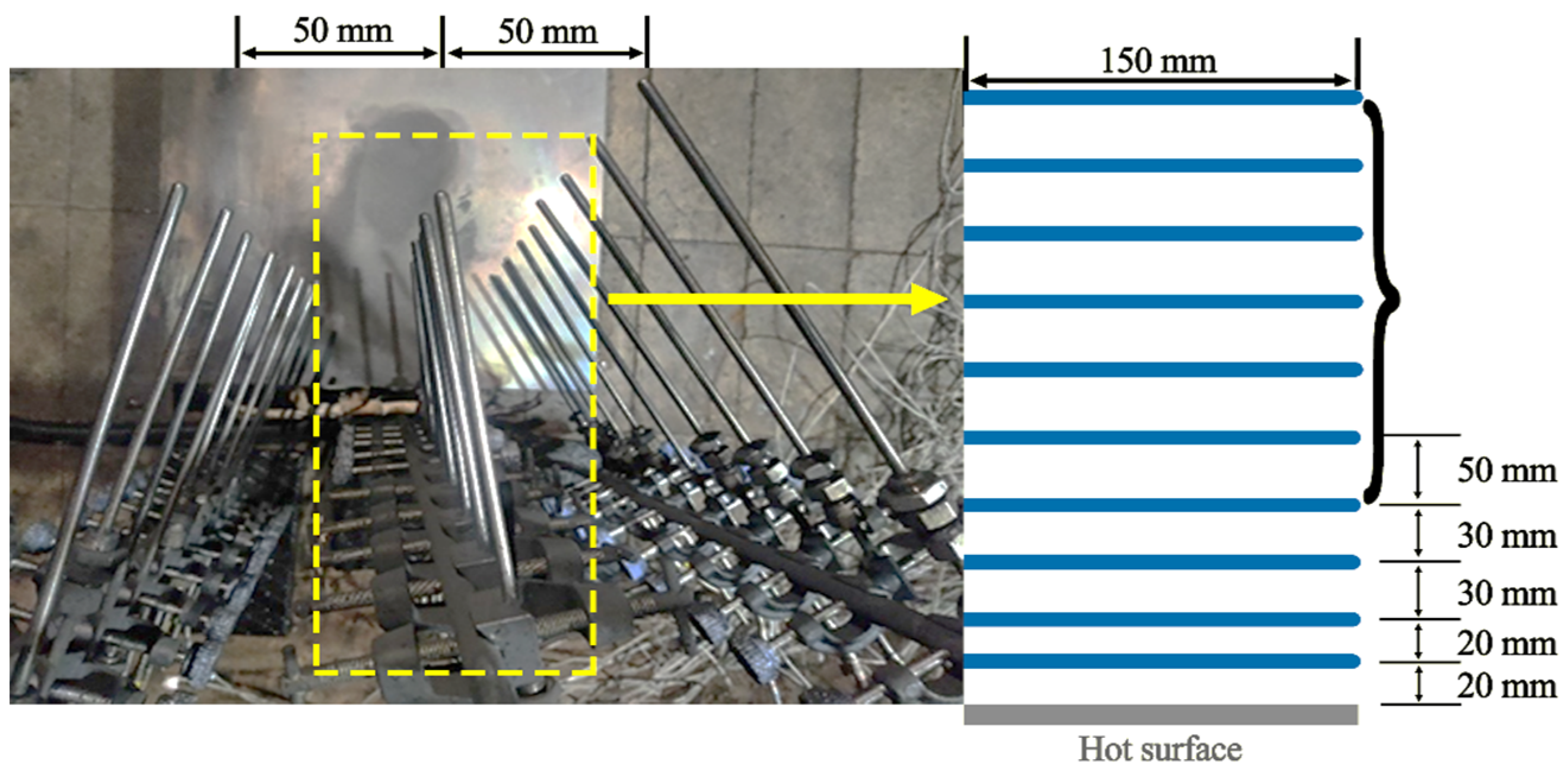
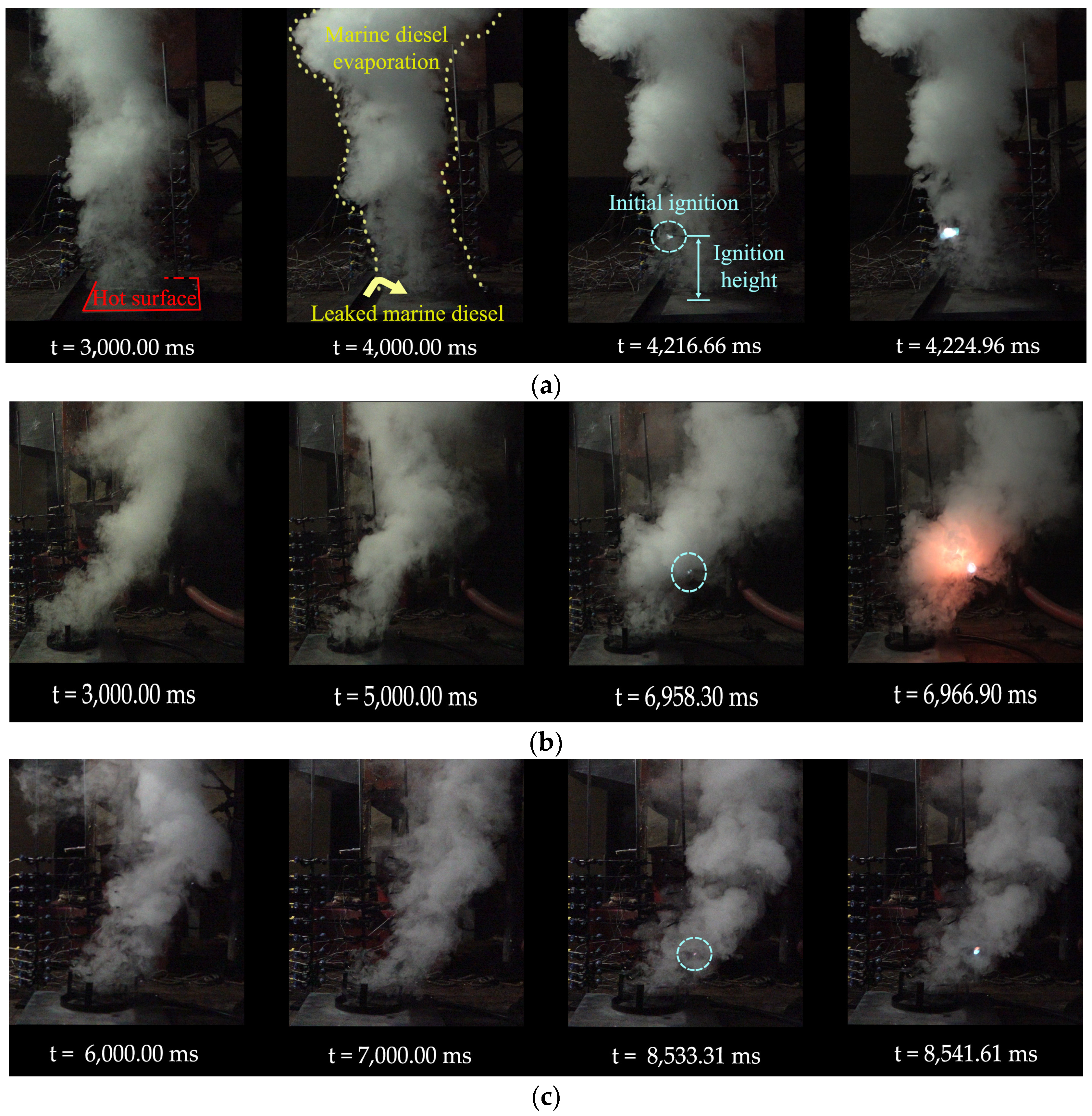
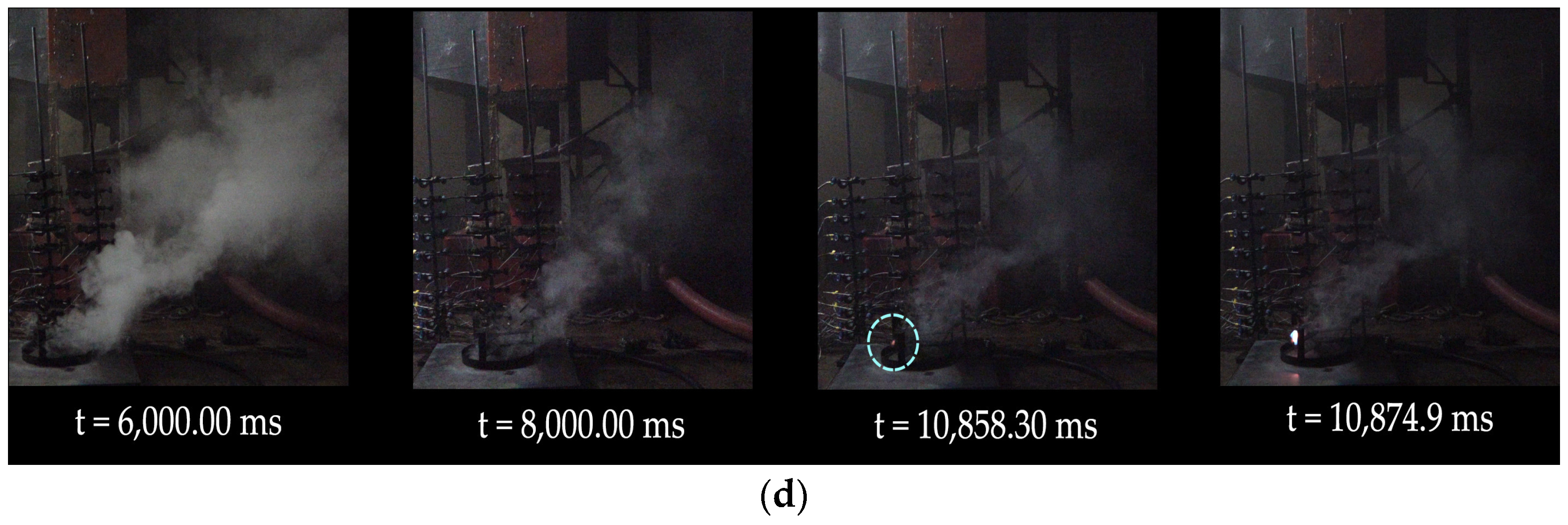
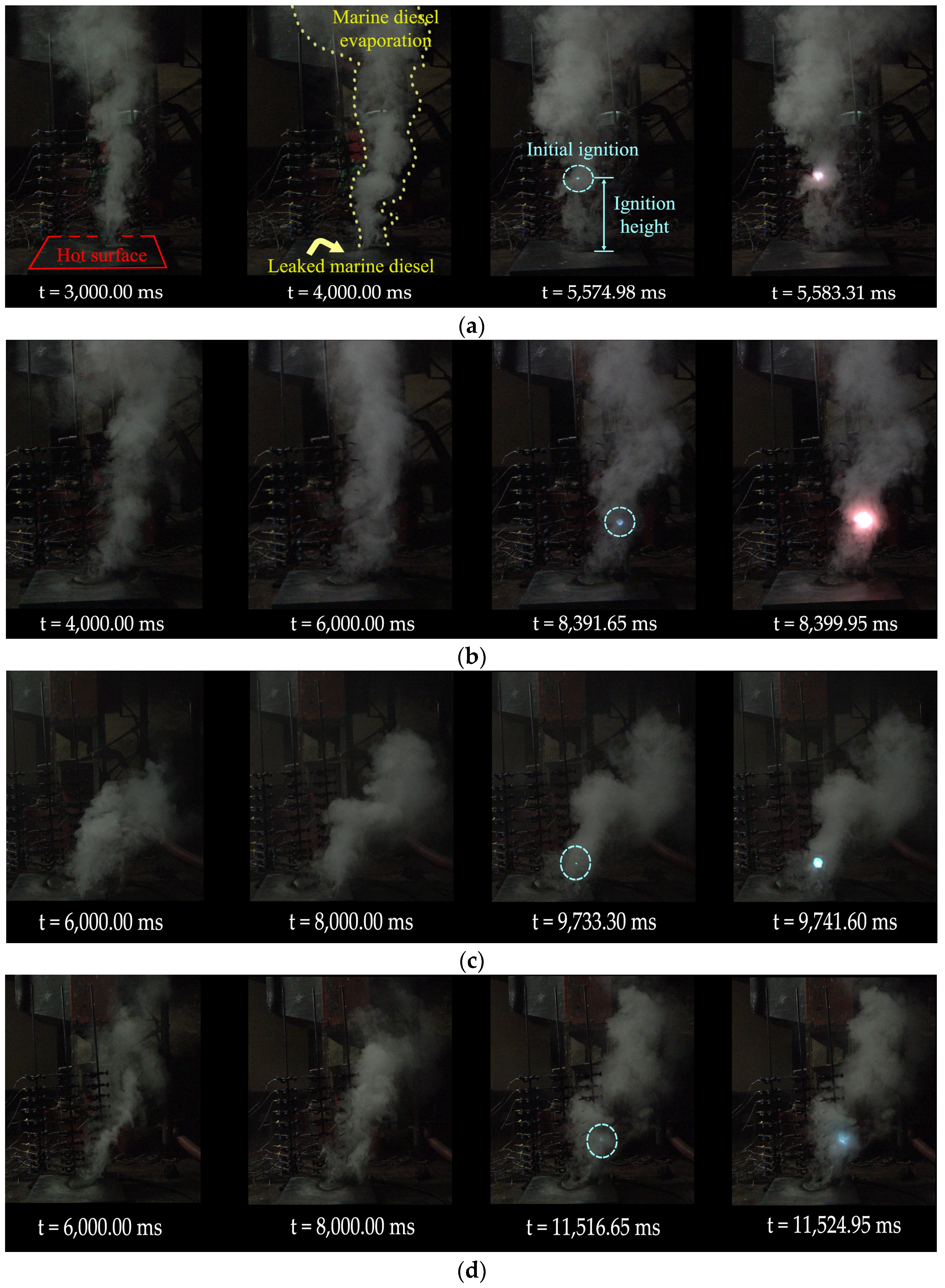
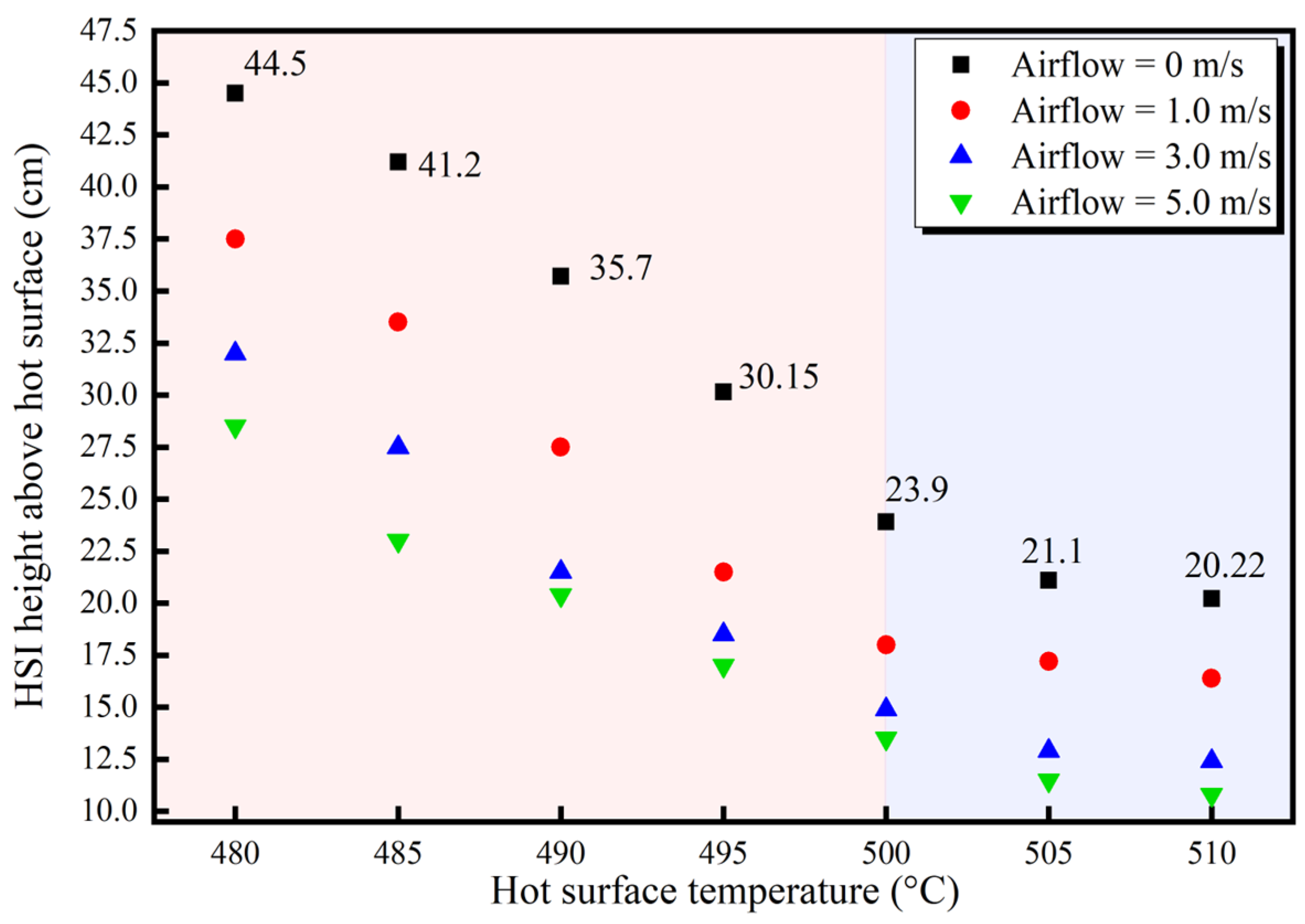
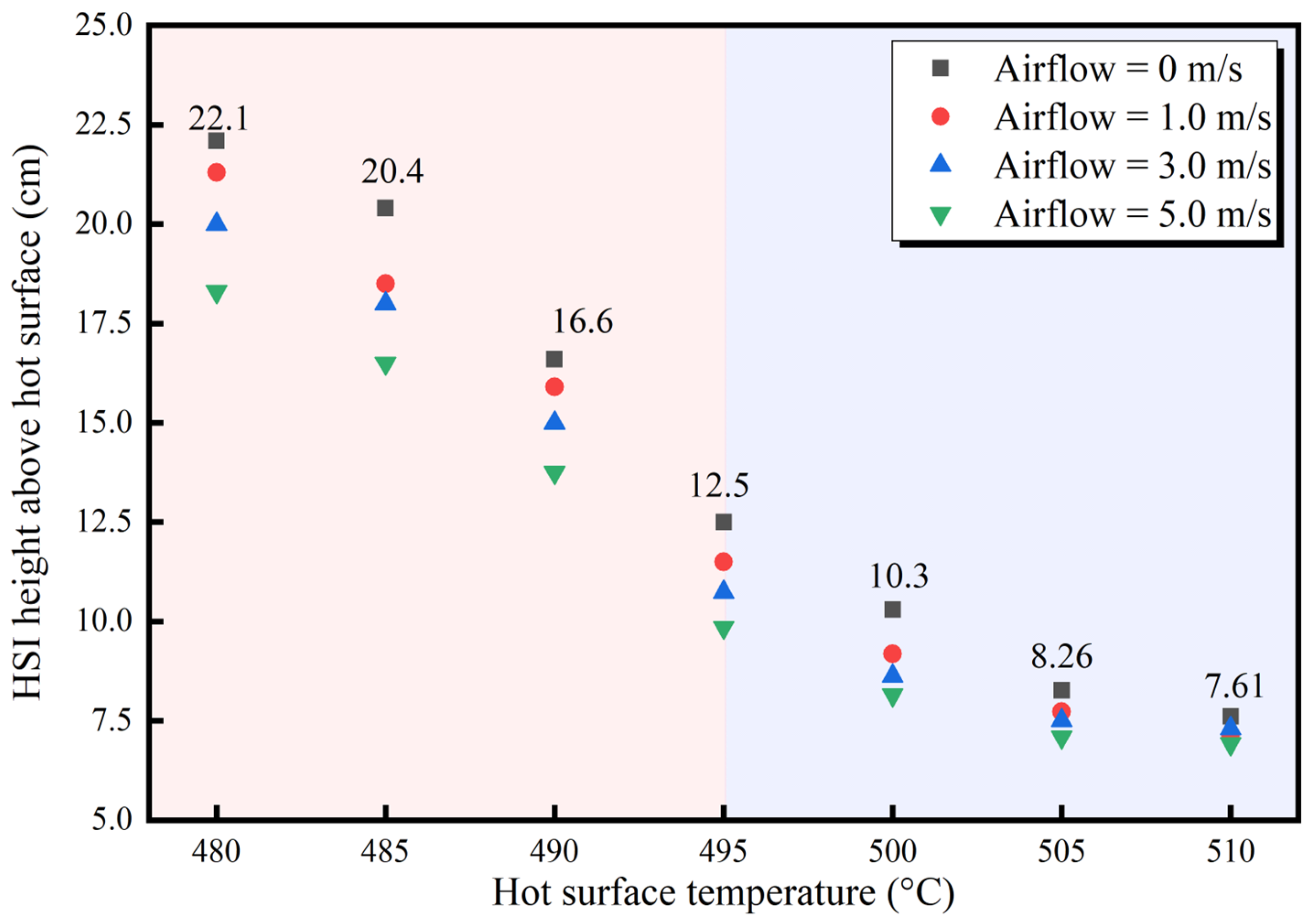
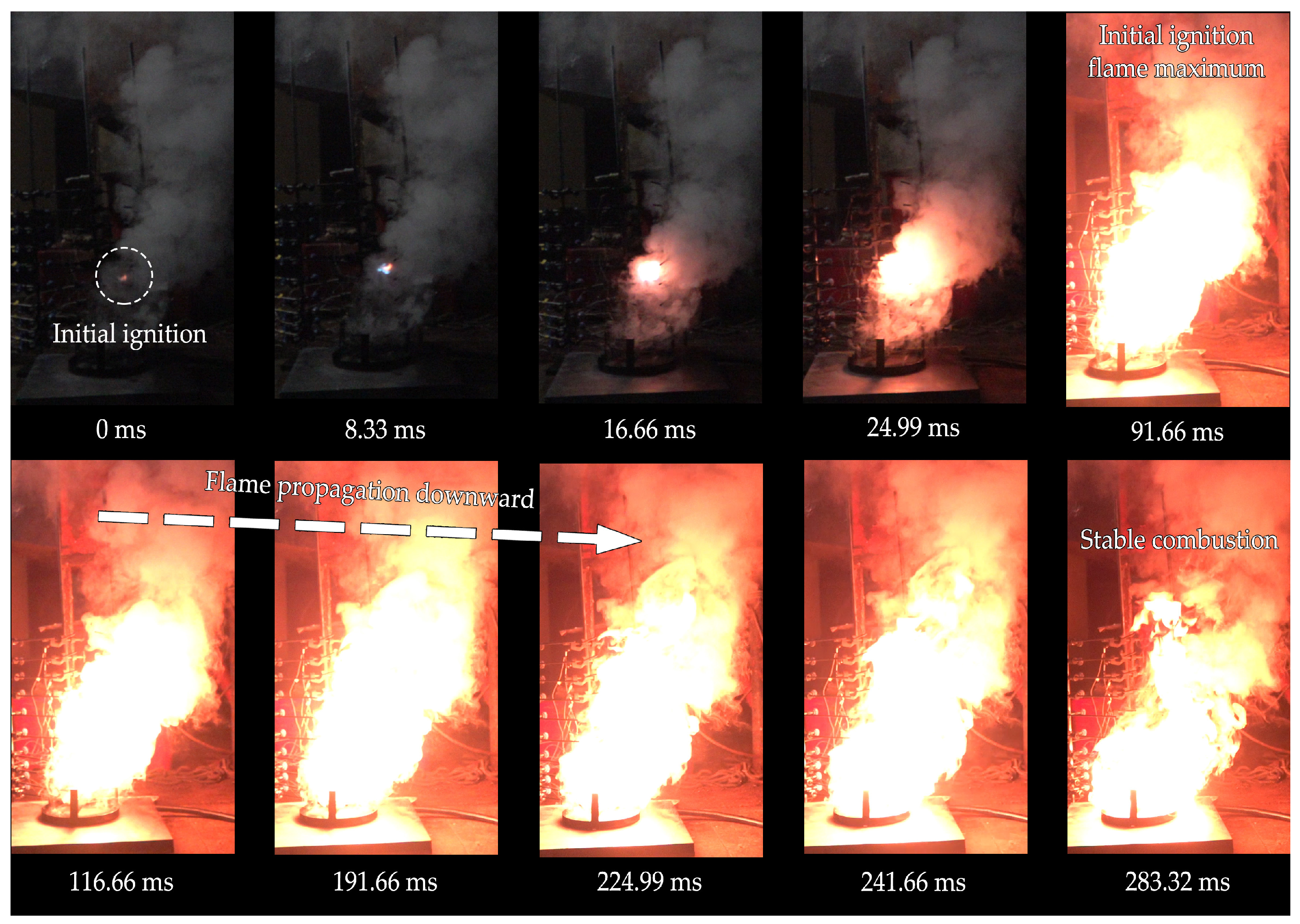
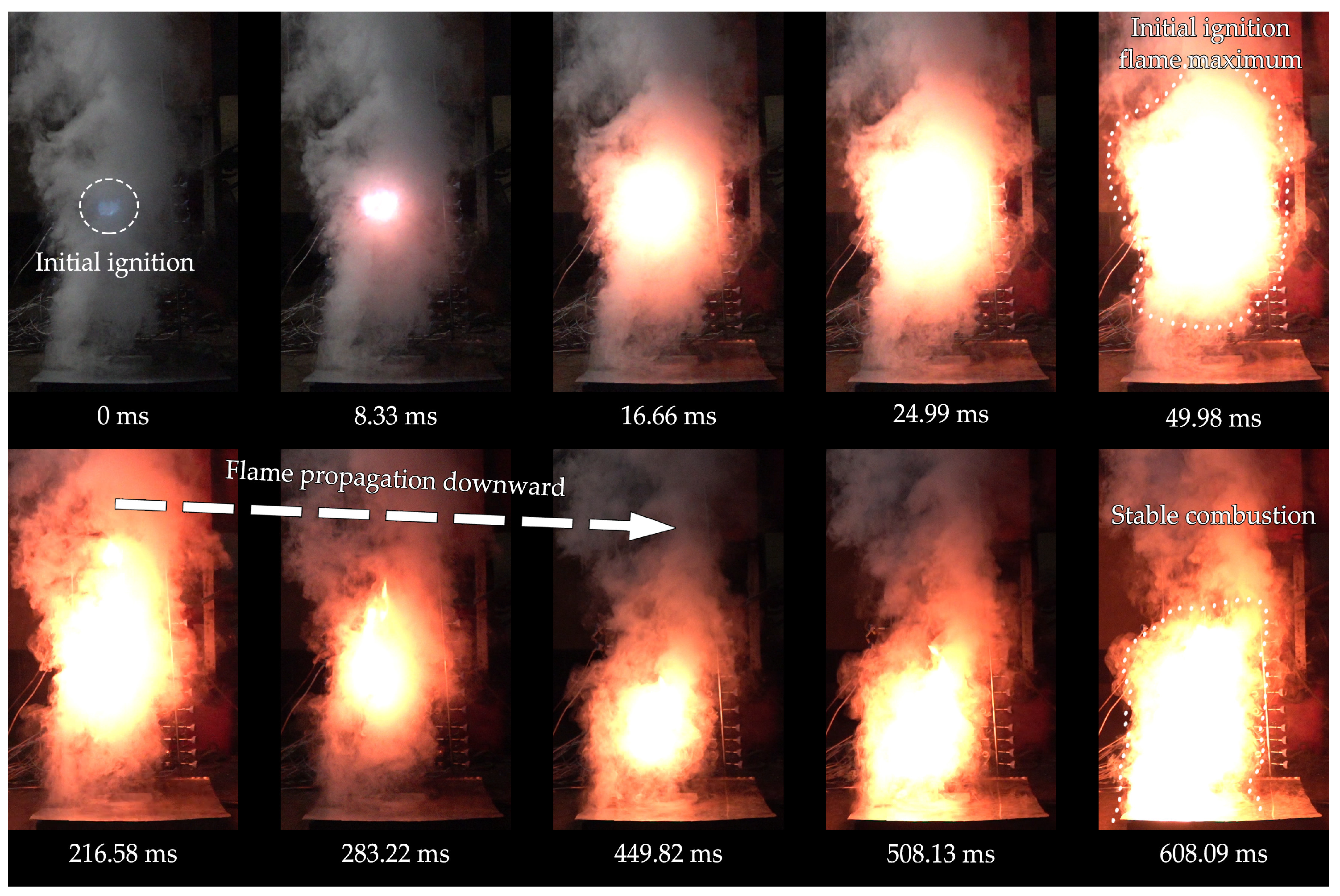
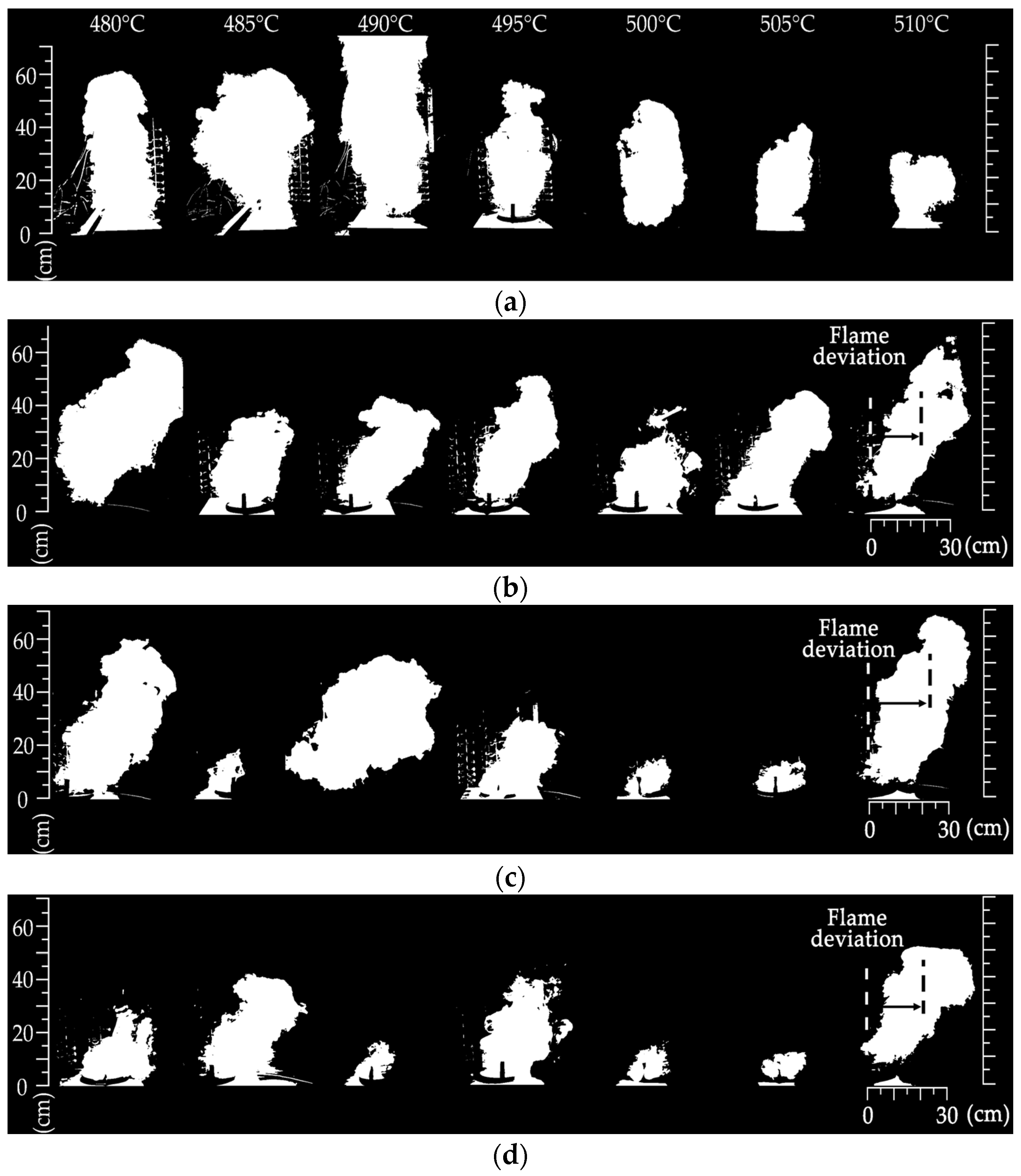

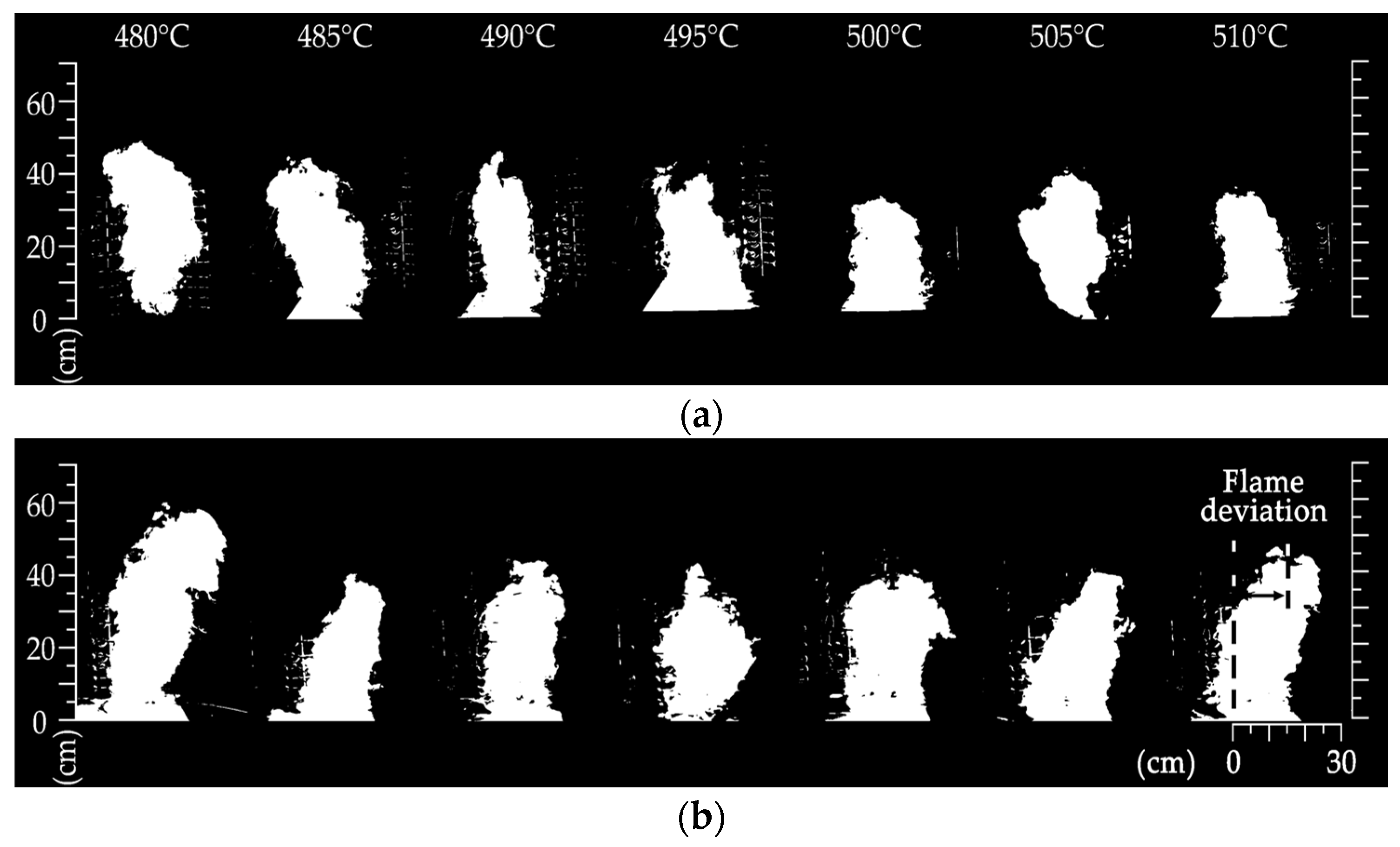
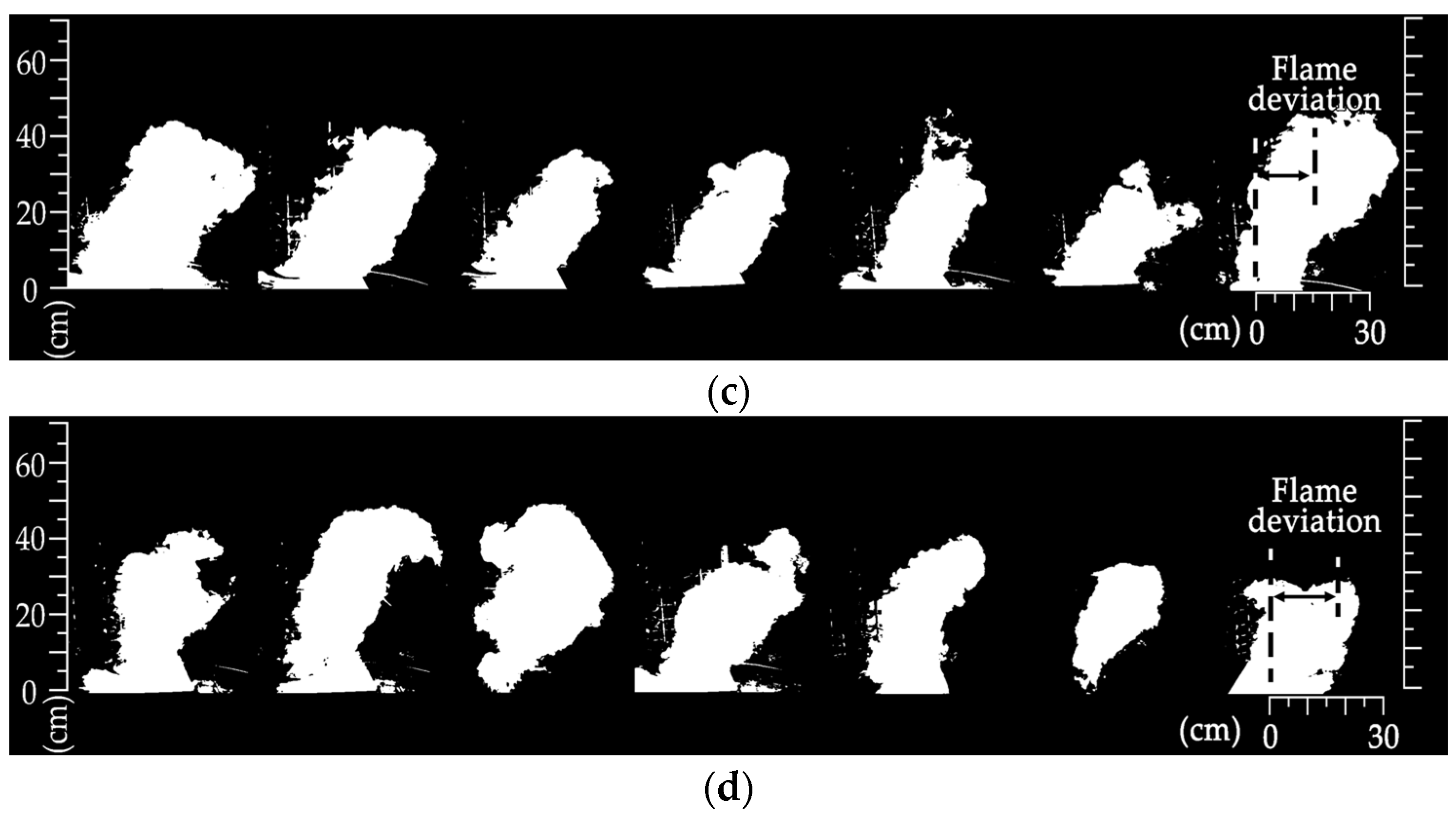


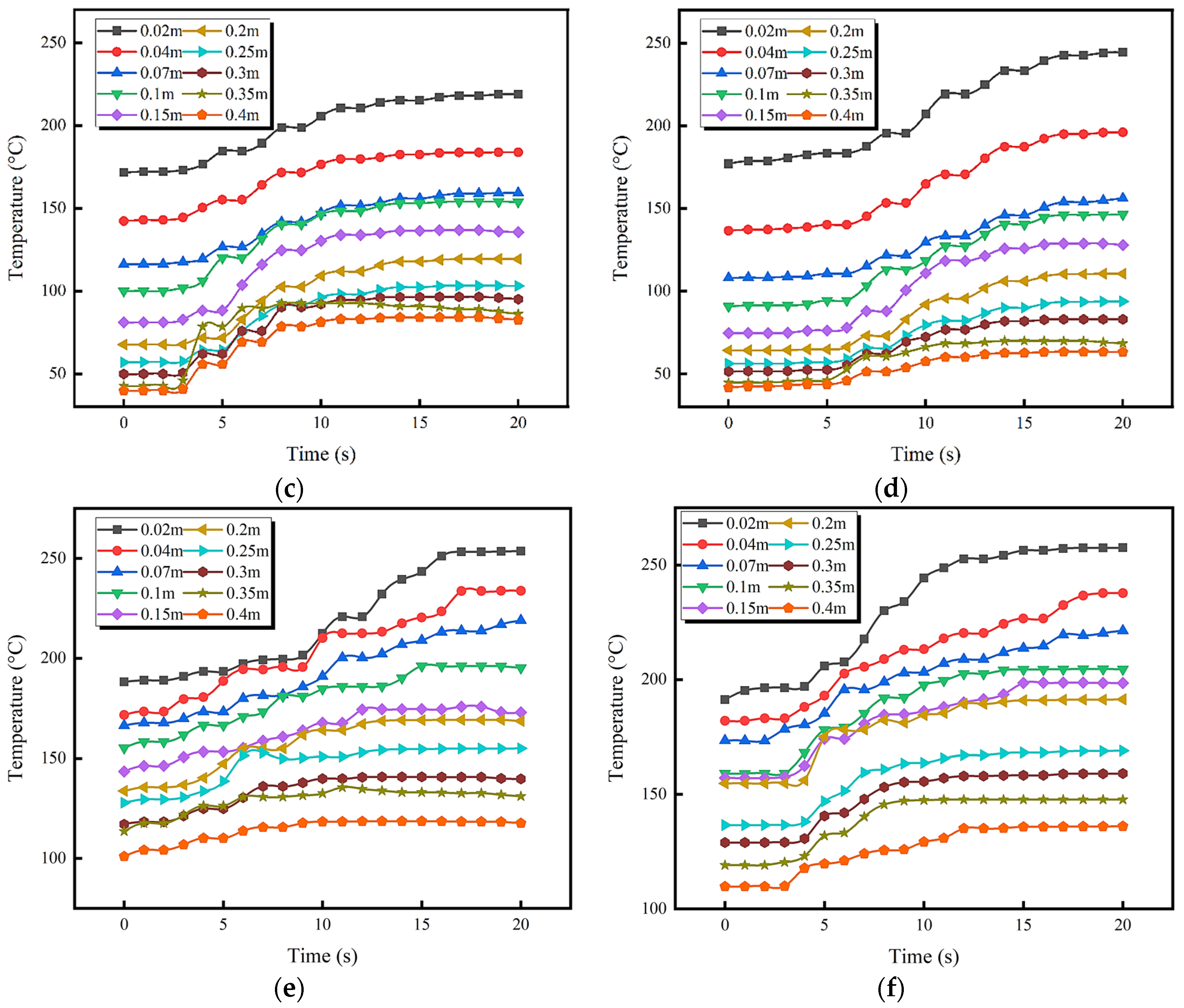
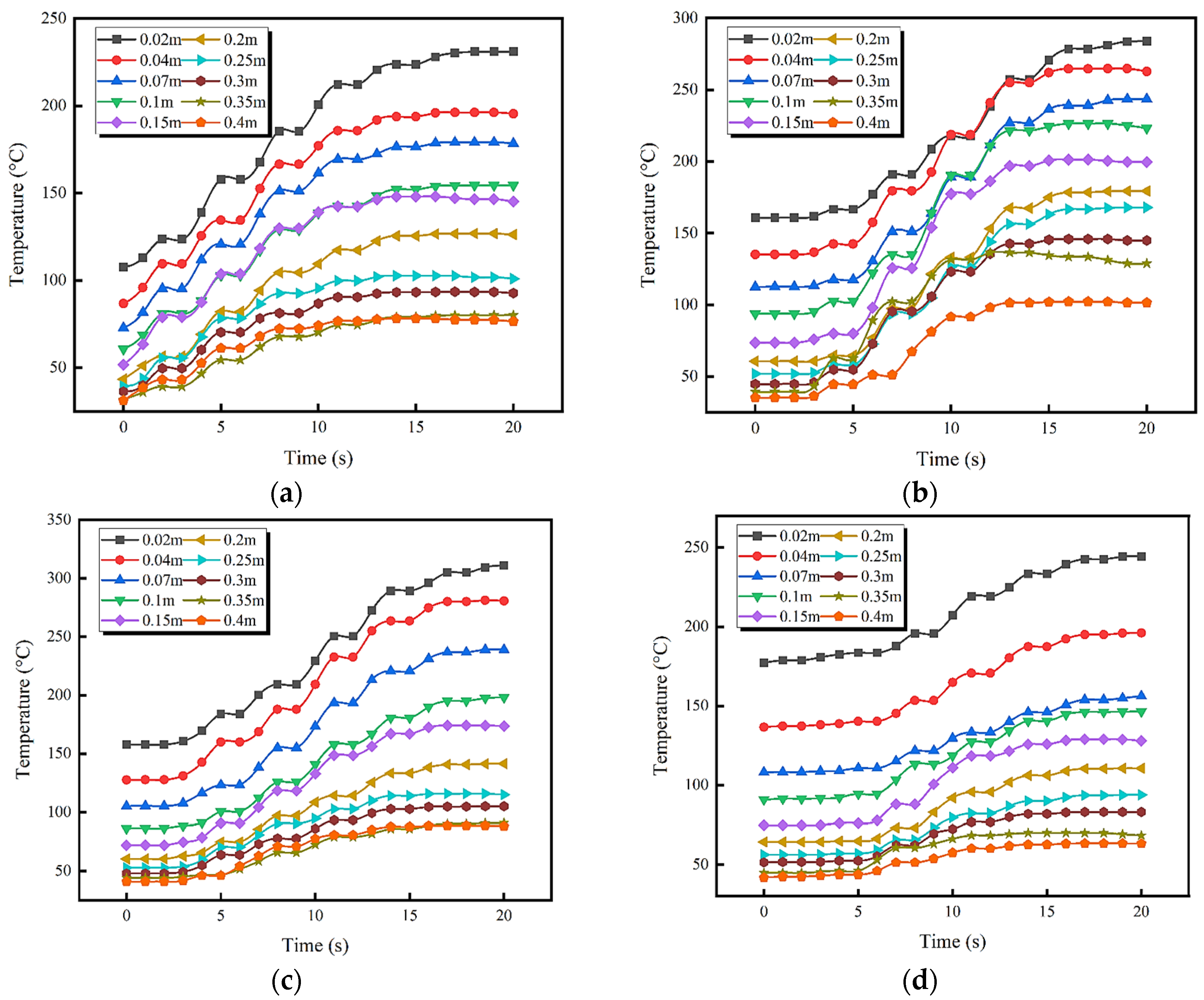
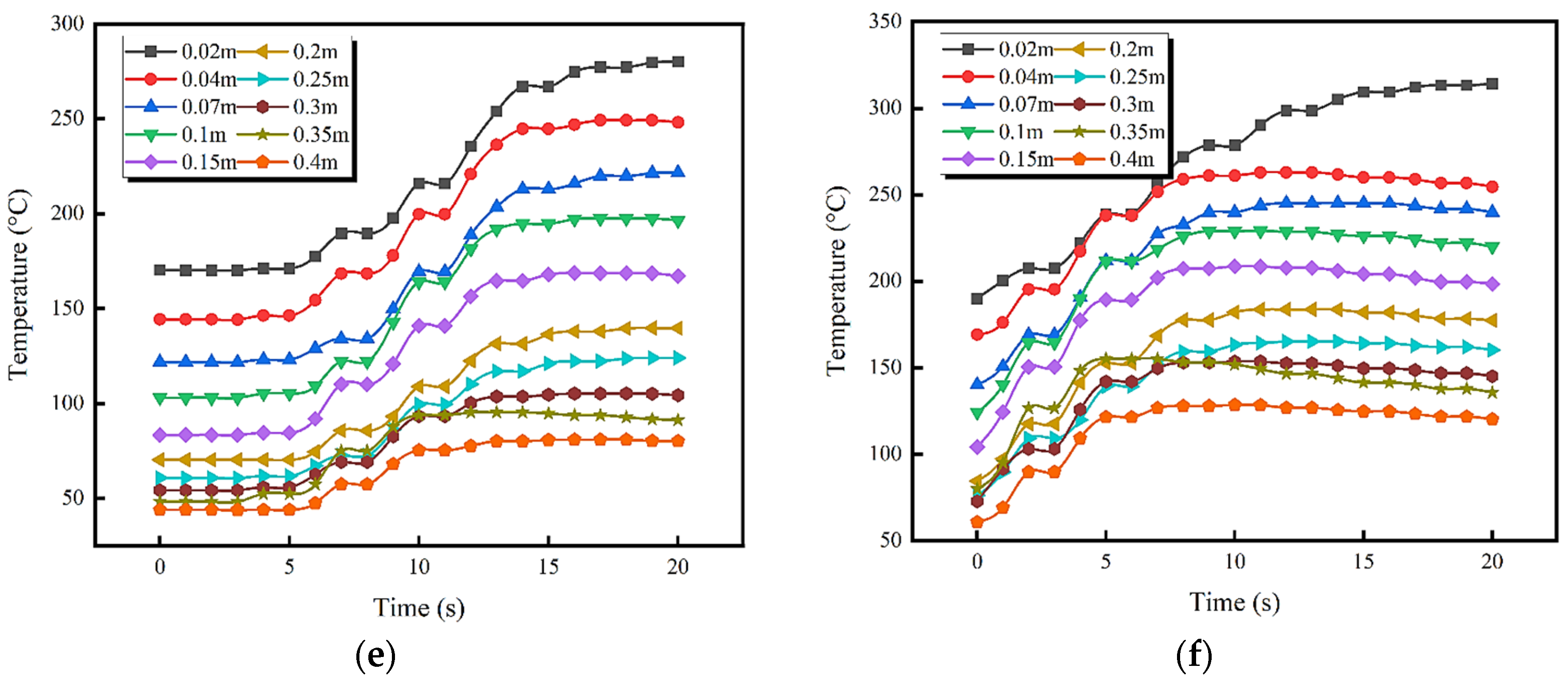
| Material | Density (293.15 K, kg/m3) | Kinematic Viscosity (313.15 K, mm2/s) | Flash Point (K) | Pour Point (K) | Surface Tension (mN/m) | Heat Value (×107 J/kg) |
|---|---|---|---|---|---|---|
| Marine diesel | 850 | 3.5 | 473 | 255 | 26.8 | 3.3 |
| Hydraulic oil | 900 | 46.5 | 503 | 258 | 33.9 | 3.9 |
Disclaimer/Publisher’s Note: The statements, opinions and data contained in all publications are solely those of the individual author(s) and contributor(s) and not of MDPI and/or the editor(s). MDPI and/or the editor(s) disclaim responsibility for any injury to people or property resulting from any ideas, methods, instructions or products referred to in the content. |
© 2023 by the authors. Licensee MDPI, Basel, Switzerland. This article is an open access article distributed under the terms and conditions of the Creative Commons Attribution (CC BY) license (https://creativecommons.org/licenses/by/4.0/).
Share and Cite
Wang, K.; Ming, Y.; Liu, X.; Wang, H.; He, Y. Effect of Lateral Airflow on Initial HSI and Flame Behavior of Marine Fuel in a Ship Engine Room: Experiment and Analysis. J. Mar. Sci. Eng. 2024, 12, 5. https://doi.org/10.3390/jmse12010005
Wang K, Ming Y, Liu X, Wang H, He Y. Effect of Lateral Airflow on Initial HSI and Flame Behavior of Marine Fuel in a Ship Engine Room: Experiment and Analysis. Journal of Marine Science and Engineering. 2024; 12(1):5. https://doi.org/10.3390/jmse12010005
Chicago/Turabian StyleWang, Kan, Yang Ming, Xiaolei Liu, Hao Wang, and Yuru He. 2024. "Effect of Lateral Airflow on Initial HSI and Flame Behavior of Marine Fuel in a Ship Engine Room: Experiment and Analysis" Journal of Marine Science and Engineering 12, no. 1: 5. https://doi.org/10.3390/jmse12010005
APA StyleWang, K., Ming, Y., Liu, X., Wang, H., & He, Y. (2024). Effect of Lateral Airflow on Initial HSI and Flame Behavior of Marine Fuel in a Ship Engine Room: Experiment and Analysis. Journal of Marine Science and Engineering, 12(1), 5. https://doi.org/10.3390/jmse12010005





